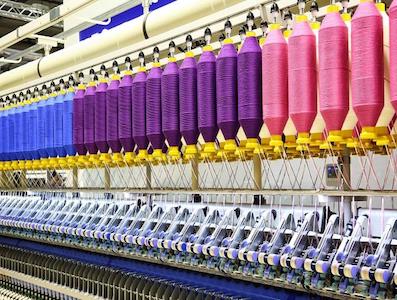
With the approval of the Production-Linked Incentive (or PLI) schemes for the textile sector, the Indian government aims to boost the production of manufacturing and exporting garments and technical textiles from the country.
India is one of the leading global textile manufacturers. The Indian domestic textile industry was valued at $75 billion in FY 20-21.
Currently, the Indian textile and apparel industry is one of the largest industries in the world, as it contributes more than 12% to annual global exports.
And while the government’s existing schemes like RoDTEP and many others are already in place, the PLI scheme launch could potentially open up avenues for entirely new gains for the nation.
The PLI scheme from the government sector is pledging incentives (worth ₹10,683 Crores to be precise) over five years to help the textile industry and garner investments at the same time.
Also Read: MSME Schemes For Empowering Women Entrepreneurs
The PLI Scheme In The Textile Sector – An Overview
Table of Contents
The Union Government, in March 2020, rolled out a PLI scheme aimed at boosting domestic manufacturing and reducing extra costs on import bills.
The scheme was adopted in December 2021 with the objective of self-reliance in India. The Atma Nirbhar Scheme (or self-reliance) allows India to manufacture and produce goods in the country only. This not only saves uninvited taxes but also creates new opportunities for its citizens. The PLI scheme was aimed toward the same thing – boosting the economy and creating different opportunities.
The PLI scheme also paves the way for local companies to set up new manufacturing units. More than 40 product categories under man-made fibers (MMF) and 10 categories in the technical textile segment will be covered in the PLI scheme.
For man-made fibers, the scheme will cover product categories, such as trousers, shirts, pullovers, bandages, or safety airbags, including a few other categories.
However, since the technical textiles segment is practically new to the Indian market, their application in different sectors can improve their condition. These sectors include but are not limited to water, health, defense, automobiles, aviation, etc.
In the past, the government had also introduced a National Technical Textiles Mission to encourage the research and development efforts in the sector. The introduction of the PLI scheme creates new opportunities for investments in this segment as well.
Also Read: Top Five Government Schemes For Retail Businesses
PIL Scheme Roadmap
With the allocation of such a huge budget to the Indian textile industry, the government aims to achieve a few goals, which include:
- Fulfilling the PLI scheme objectives by allocating the required resources to all existing manufacturing industries.
- Fulfill the acquisition of raw materials at reasonable prices. This will essentially be beneficial for manufacturers that operate on a small scale.
- The government plans to provide adequate resources to manufacturers for the marketing and discoverability of their products as well.
- The fulfillment of the PIL Scheme is also bound to result in thousands of ‘good-paying’ jobs in the next few years. This will essentially help people from remote areas to find suitable jobs.
Benefits of PLI Scheme For The Textile Sector
With the introduction of the PIL scheme, some immediate benefits could be seen:
- The PLI Scheme will lead to a turnover of ₹3 lakh crores and more than 7.5 lakh jobs in textile industries. More than that, the scheme will create thousands more jobs for supporting activities.
- The PIL Scheme will also prioritize investments in Tier 3 and Tier 4 towns, making it easier for people in these parts to explore different opportunities.
- The textile industry will also be able to give more attention to employing women in the industry and celebrate the growth of women entrepreneurs.
- The scheme will immediately allow states like UP, Maharashtra, Gujarat, Tamil Nadu, and Punjab to witness a positive economic impact.
The goal is to scale the economic and production cost of the Indian textile industry by introducing different changes in the raw material and final products, allowing the industry to become highly efficient in the years to come.
Also Read: PM Svanidhi Scheme- Key Features And Benefits
Economic Influence of PLI Scheme
With the aim to improve the levels of production of man-man fabrics, the PLI scheme aims to set up local textile industries throughout the country.
Doing this will:
- Create new employment opportunities
- Improve the current Indian textile export frequency
- Allow the establishment of new businesses in the country
With the significant demand for textiles in the western markets, India can surely fill the gap with its technical textiles and popularize them throughout other countries.
The introduction of the PIL scheme will provide different kinds of incentives to investors. As per the projections, the increment in the investment revenue could range anywhere from 3-10%, depending on the industry’s operations.
Implementing the PLI scheme will also allow India to compete with the Chinese textile mills and supply native textiles to other countries.
Also Read: Top Facts About PMRY Loan
Conclusion
The PLI scheme roll-out potentially opens doors for a variety of benefits to the Indian economy. Not just that, it also attracts new investments by foreign parties for the country’s textile sector.
Because of the high raw material costs and other headwinds, India currently faces heavy taxation and cheap quality imports in the MMF textile trade.
However, a blessing like the PLI scheme could turn things around and help the economy of the country. With the possibility of lakhs and jobs and a home-grown textile manufacturing sector, India could reap the same benefits as the rest of the countries.







